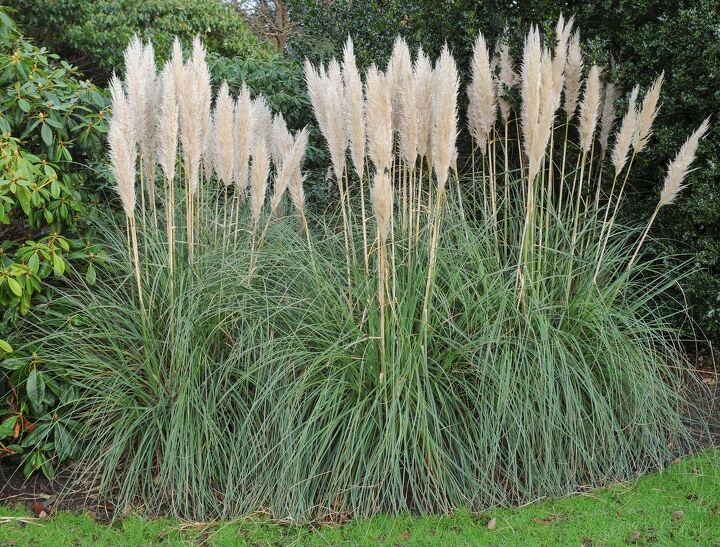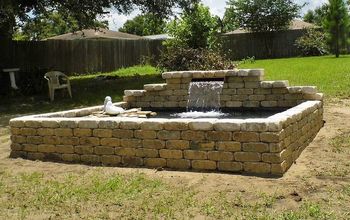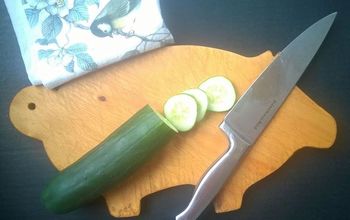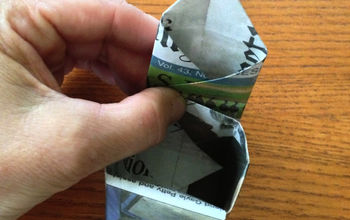How to Care for Pampas Grass and Style It in Your Home

By Alexa Erickson
Fluffy pampas grass is a whimsical addition to the home, both inside and out. The playful plumes add laid-back texture to the yard as they flutter in the breeze. Cut and styled in large vases within the home, the grass adds a natural element that provokes a cozy-earthy environment.
You’ve likely seen pampas grass trending all over social media and beyond, and are intrigued by its allure. Read on to find out how you can incorporate it into your lifestyle by learning how to plant and care for pampas grass, and then how to harvest it and style it in your home.
What Is Pampas Grass?
The common name for Cortaderia selloana, pampas grass is a flowering plant and ornamental grass native to southern South America. Now cultivated worldwide, it’s identifiable by its tall stature, with heights ranging between four and 13 feet, and its feathery, cream-colored plumes.
When to Plant Pampas Grass
Pampas is a perennial grass, so it goes dormant in the wintertime. By early spring, new growth occurs. Prepare to grow the grass from seed in the mid-to-late winter months. If you’re planting the grass from transplants, wait for the threat of frost to pass before planting them in the ground in early spring.
Where to Grow Pampas Grass
To ensure that pampas grass thrives, it’s important to know the best climate conditions, proper amount of sun exposure, and soil type the plant requires.
Climate
Most pampas grass varieties can grow in USDA Hardiness Zones 7 to 11, but some types can grow in Zone 6, including the silvery, white plumes of the Andes Silver cultivator, which grow up to seven feet tall, and Patagonia, identifiable by its silvery-white plumes that grow up to seven feet above the foliage.
If you live on the coast, you’re sure to love pampas: The grass stands up especially well to coastal salt sprays, wind, and drought conditions.
Sun Exposure
Pampas grass prefers to be grown in full sun, so plant it somewhere in your yard that’s unobstructed from shade for at least six hours a day. While the grass may be able to tolerate partial shade, too much of it can deprive the grass of its normal growth process, and even weaken the grass to the point of subjecting it to diseases (we outline diseases to watch out for below).
Soil Type
Pampas requires rich, moist, and well-drained soil to grow. To assist with proper aeration and drainage, consider tilling and adding a well-balanced fertilizer to the garden spot where you’re planning on growing pampas grass.
Planting in the Garden
As for where to plant in the garden, pampas is particularly attractive when it serves as the background of a perennial border. It’s a plant made to stand tall, add color, and its feathery, wispy foliage provides textural contrast to other flowering perennials.
Hazards and Concerns
Pampas grass is a self-seeding plant that, if not kept under control, can get invasive. In fact, a single plant is capable of producing a million seeds annually. When carried by the wind, the seeds will potentially produce pampas in undesired areas and fight for resources with existing native plants. With that said, be mindful to plant pampas with enough space between your home’s perimeter and your neighbors’. Additionally, pampas grass can be a fire hazard, so avoid planting too close to flame sources like your grill or dryer vent.
Photo via Shutterstock
How to Grow Pampas Grass from Seed
Growing pampas grass from seed is simple, but not recommended if you’re looking to only grow the fluffy plumes pampas are known for. Unlike their showy counterparts, the plumes of male plants are void of the silky hairs on their flowers. When planted from seed, there's no way of knowing whether the plant is male or female until it flowers, notes the UGA Extension. In other words, there's only a 50 percent chance that the seeds will grow plumes.
Most pampas are propagated by dividing a female clump, which we'll teach you how to do below.
However, if fluffy plumes aren’t what you’re after and you choose to plant from seed, start the seedlings indoors four to six weeks before the last frost in spring. Here's how.
Tools and Materials Needed
- Peat moss
- Horticultural sand
- 4-inch seedling pots
- Straws
Step 1: Plant Seeds in Container
Fill each four-inch seedling pot with equal parts peat moss and light soil sand. Plant five evenly spaced seeds on the soil surface of each pot and leave the seeds uncovered.
Step 2: Water the Soil
Water the soil, then cover each seedling pot with a clear plastic bag. Place straws into the potting soil around the perimeter of each pot to keep the plastic off the soil and allow for proper air circulation.
Step 3: Place the Container in a Sunny Location
Place the containers in an area of the home that receives about six hours of sun and has an average temperature of 65-70 degrees Fahrenheit.
Step 4: Water Daily
Check the soil daily, making sure it remains evenly moist.
Step 5: Prepare to Transplant
Within two weeks, the seeds should germinate and start to sprout out of the soil. The seedlings are ready to be planted outside after the plants have reached three to four inches in height, and two weeks following the last frost. Move on to the next section to learn how to put your pampas grass transplants in the ground.
How to Grow Pampas Grass from Transplants
While it’s extremely easy to grow, it’s important to know what you’re getting into before planting pampas grass around the home. Here’s how to plant pampas grass transplants, whether you started seeds indoors or picked up the transplants at your garden nursery.
Tools and Materials Needed
- Small shovel
- Pampas seedlings
- Measuring tape
- Soil
- Water
Step 1: Space Out and Dig the Holes
Dig holes about 15 inches deep, making sure there is at least six feet of space between each hole.
Step 2: Plant the Seedlings
Massage the root ball of each seedling. This will loosen the roots and allow them to better blend with the soil. Place the plant in the hole, then backfill with soil to the top of the seedling base.
Step 3: Water
Water the planting site thoroughly to settle the soil.
How to Divide Pampas Grass
As we mentioned above, pampas grass grows best when it’s propagated via plant divisions. To divide, find a strong clump of an existing pampas grass plant with about four to six shoots. Use a sharp spade to dig it out of the ground while keeping the root ball maintained. Place the clump on a tarp and then use the spade to cut the clump at the center point, dividing the clump into two halves. Then, divide each half into two more halves so you have four quarters of the clump in front of you. Each of these clumps can be planted using the steps we provided in the section above.
How to Care for Pampas Grass
Overall care for pampas grass is simple and straightforward! Here’s what you need to know about proper pampas grass watering, pruning, fertilizing, and more.
Watering
During its first growing season, plan to keep the soil that pampas grass is growing in consistently moist. Once one year mature, the ornamental grass can survive just from natural rainfall, but if you live in a hot and dry climate, irrigate the grass weekly.
Pruning
Pampas grass grows quickly to the point of invasiveness. Prune back your pampas annually in late winter using gardening shears and leave several inches of its length behind so the plant looks like more of a bushy shrub. Despite its fluffy plumes, pampas grass’s straight-edge green leaves are fairly sharp, so wear gloves to protect yourself. Follow up your pruning session with a fertilizer (more info on this below).
Fertilizing
You can fertilize pampas grass using a 10-10-10 fertilizer. Avoid applying fertilizer to the plant directly, but instead, place it evenly around the plants. Water the grass and its surrounding soil thoroughly after fertilizing.
Pests and Diseases
Luckily, pampas grass is a hardy plant that’s not easily damaged by pests. The few offenders to look out for include aphids and mites. However, if you follow guidelines for proper watering and fertilization, pampas grass will remain mostly pest-resistant. Dusty, dry conditions will attract mites, for instance.
Aphids and mites will suck out the sap from the blades, resulting in infected parts that turn yellow. Heavy infestations can be treated with insecticidal soap spray.
Look out for fungal diseases including rust and powdery mildew. Avoid overhead watering, which promotes rusting (blisters on the blades of grass). If your pampas grass wasn’t planted in an area that receives optimal sun, it may be subject to powdery mildew, or powdery blotches on the leaves.
To control fungal diseases, cut back the pampas to within a few inches above the ground, and the resilient plant should recover.
How to Cut and Style Pampas Grass
In recent years, pampas grass has become highly prized as an indoor floral arrangement. If you’ve planted pampas in your garden, harvest some for an intriguing display in the home. They can be cut down and used in a small vase for a gorgeous table centerpiece, or left in their tallest form and positioned in oversized floor vases to bring interest to the corners of a room or otherwise empty spaces. Pampas grass plumes are also great for wreath-making and working into floral assemblies for events like weddings and showers.
To harvest, use pruning shears to cut the stalk of the grass once it’s fully emerged, but prior to it being fully mature and starting to shed. To avoid shedding after harvesting pampas, spray the plumes with hairspray before styling.
Do you have pampas grass at home? How do you style it?


























Frequently asked questions
Have a question about this project?